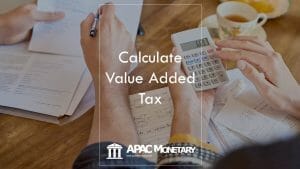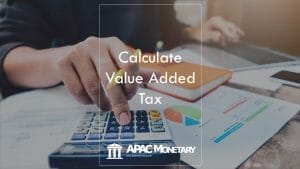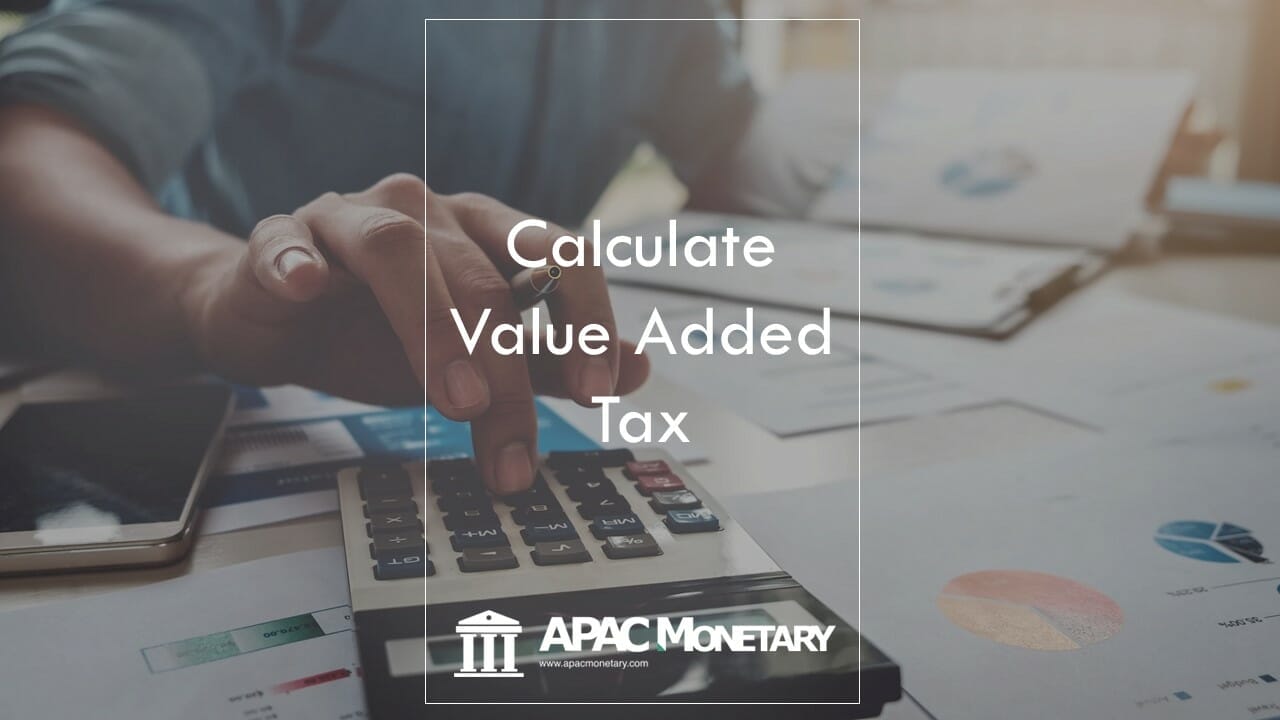Table of Contents
This article will discuss how to compute VAT amount in the Philippines. So if you’re engaged in business, trade, or the practice of the profession in the country, and would like to know how much taxes you’ll pay, continue reading!
Computing VAT amount in the Philippines is not as difficult as it may seem. There are only a few steps involved in the process. First, determine the value of the good or service being purchased. Second, multiply that value by the VAT rate of 12%. Third, subtract the VAT-exempt amount from the total amount due. Fourth, compute the amount of VAT by multiplying the VAT rate by the value of the good or service being purchased.

The Simplest Way: How to Compute VAT Amount in the Philippines
In the Philippines, the value-added tax (VAT) is a consumption tax imposed on the sale of goods and services. The VAT rate is currently 12% To compute the VAT amount, you first need to determine the gross selling price or gross receipt. This is the total amount of money charged for the sale of goods or services, including the VAT. From the gross selling price, you then subtract any discount or promo. Here are two simple steps on how to compute VAT amount in the Philippines

Step 1: Determine the Output Tax / Input Tax
The first thing you need to do is determine the Output Tax (or VAT payable) and the Input Tax is the first step.
To find out the Output Tax, you need to multiply the VAT rate of 12% by the gross value in money or gross selling price of the services or goods. So the formula is as follows:
Output Tax = VAT Rate x Gross Selling Price/Value in Money
For example:
If you are selling a product with a gross selling of Php 2,000.00, your VAT payable would be:
Output Tax = 3,000 x 12% (0.12)
Output Tax = 360.00
The formula to determine the Input Tax is the same as the Output Tax
For example:
If you purchase goods for Php 3,000.00, excluding VAT.
Input Tax= 2,000 x 12% (0.12)
Input Tax= 240.00

Step 2: Compute the VAT amount Philippines
For those asking how to compute VAT amount Philippines, you need to subtract the input tax from the output tax. So the formula is as follows:
VAT Payable = Output Tax – Input Tax
Therefore:
VAT Payable = Output Tax (360.00) – Input Tax (240.00)
VAT Payable: 120.00
NOTE:
If the VAT is:
- Negative, it means you are entitled to a refund.
- Positive, it means you need to pay VAT.
- Zero, it means there is no VAT payable for the period.
The Philippines has a complex VAT system, so learning how to compute VAT amount Philippines and file VAT return is important for businesses running in the country. Failing to complete both can lead to penalties, such as paying a surcharge of twenty-five (25%) percent of the basic tax or a minimum of Php 2,000, whichever is bigger.
However, by following the steps and formulas explained above, business owners and agencies can ensure that they comply with VAT regulations.

What is Value Added Tax (VAT)?
In the Philippines, Value Added Tax, or VAT, is a consumption tax assessed on the sale of goods and services. The tax is levied at each stage of production, from the purchase of raw materials to the sale of the final product. The amount of tax paid is based on the value added to the product at each stage of production.
To compute the VAT amount, businesses must first determine their VAT liability. This is done by adding up all the VAT paid on purchases made from other businesses and subtracting any VAT paid on sales made to other businesses. The resulting figure is the business’s VAT liability.
Businesses can then calculate the amount of VAT they need to pay by multiplying their VAT liability by the relevant tax rate.

How VAT works in the Philippines
In the Philippines, value-added tax (VAT) is a consumption tax levied on the sale of goods and services. The tax is imposed on the buyer at each stage of the production or distribution process, with the seller passing on the tax to the buyer. The tax is ultimately borne by the final consumer.
The VAT rate in the Philippines is 12%, which is levied on all taxable goods and services. The rate is fixed by law and cannot be changed by businesses. However, certain items are exempt from VAT, such as medicines and medical devices, educational materials, and some financial services.
To compute VAT amount in the Philippines, simply multiply the price of the good or service by 12%. For example, if you purchase a good for PHP 100, then your VAT amount would be PHP 12 (100 x 12%).

Who is required to pay VAT in the Philippines?
In the Philippines, the value-added tax (VAT) is a consumption tax levied on the sale of goods and services. The VAT is imposed on all transactions involving the sale of goods and services, including importation. The VAT is currently imposed at the rate of 12%.
Who is required to pay VAT?
The following Filipinos are required to pay Value-Added Tax:
1. Any Filipino or foreign individual who, in the course of trade or business, sells, barters or exchanges goods or properties;
2. Any Filipino or foreign individual who leases goods or properties;
3. Any Filipino or foreign individual who renders services; and
4. Any Filipino or foreign individual who imports goods into the Philippines.

What are the benefits of paying VAT in the Philippines?
VAT, or value-added tax, is a consumption tax imposed on goods and services sold in the Philippines. The tax is computed as a percentage of the selling price of the good or service. The VAT rate in the Philippines is 12%.
VAT is an indirect tax, meaning that it is passed on to the consumer by the seller. The seller collects the VAT from the buyer and remits it to the government.
The main benefit of paying VAT is that it helps fund government expenditures. VAT revenue is used to finance public spending on infrastructure, healthcare, education, and social welfare programs. By paying VAT, businesses and individuals contribute to the development of society.
Are there any exceptions to paying VAT in the Philippines?
Value-added tax (VAT) is a consumption tax levied on goods and services sold in the Philippines. The VAT rate is currently 12%. To compute the VAT amount, multiply the selling price of the good or service by 12%. For example, if you sell a product for PHP1,000, the VAT amount would be PHP120.
In the Philippines, there are several exceptions to paying value-added tax (VAT). These exceptions include certain services, such as those rendered by professionals; goods that are considered essential, such as food and medicine; and exports. To compute the VAT amount due on a purchase, the buyer must first determine if the seller is registered with the Bureau of Internal Revenue (BIR). If so, the buyer can ask for a VAT invoice. The VAT invoice will show the total amount due, including VAT.

How to file for a VAT return in the Philippines
Filing a VAT return in the Philippines is not as complicated as it may seem. There are a few steps that taxpayers need to take in order to file their returns correctly.
The first step is to make sure that all of the necessary paperwork is gathered. This includes invoices, receipts, and any other documentation that is required by the Bureau of Internal Revenue (BIR).
Once all of the paperwork has been gathered, taxpayers need to fill out the appropriate forms. These forms can be found on the website of the Bureau of Internal Revenue.
After the forms have been filled out, they need to be submitted to the correct department within the bureau. Taxpayers should keep in mind that there are deadlines for filing VAT returns, so it is important to submit the forms on time.
After the forms have been submitted, taxpayers should wait to receive their VAT refund.
There are a couple of things that taxpayers need to keep in mind when it comes to filing for VAT refunds. First and foremost, there is a time limit for submitting these requests. After the time limit has expired, taxpayers will not be able to request refunds. In addition to these deadlines, it is important that taxpayers submit their requests in a timely manner. This means that they should not wait until the last minute before they file their VAT refunds.

Takeaway: How to Compute VAT Amount in the Philippines
In conclusion, computing the amount of VAT in the Philippines is not as difficult as it may seem. With a little bit of research and careful planning, anyone can figure out the right amount of VAT to charge.
Computing VAT amount in the Philippines is an obligation to the nation. The most important thing to remember is to keep track of all purchases and sales, as well as the applicable VAT rates.






